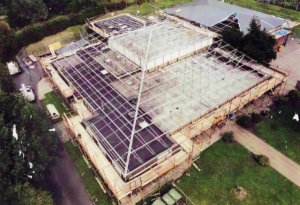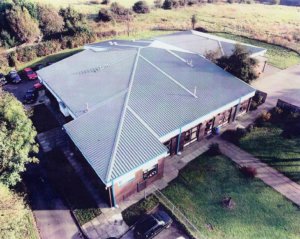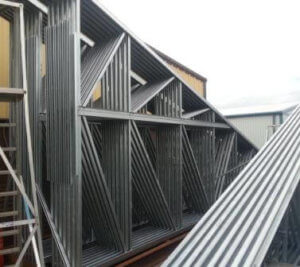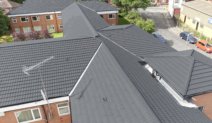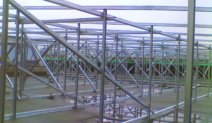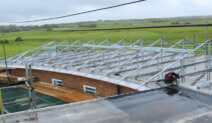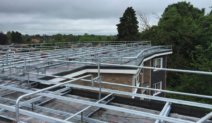Refurbish and Reap the Benefits
18th June 2014
Is your building unsightly?. Does your flat roof leak?. Are your repair costs spiraling out of control?
These are phrases that are all too familiar to many property owners during this current financial predicament. Now is the time to make a conscious decision for improvements to provide a legacy for today, tomorrow and beyond – Refurbish and reap the benefits.
Roof refurbishment need not break the bank. There are solutions out there that can remedy water ingress into your building, enhance aesthetics and also reduce the lifetime cost of your roof in one fell swoop.
One of the most cost effective solutions for the prevention of water ingress through your roof is a Dibsa flat to pitch roof conversion whereby a lightweight steel structure is installed over your existing roof and then over clad with a covering of your choice.
Problematic roofs are endemic throughout the country with all manner of buildings suffering, whether they belong to the private individual, the business owner, the developer or public sector. These failings are typically a consequence of fundamental inadequacies at the design stage or from a lack of quality, care and attention during construction.
A solution for overcoming these problems is the installation of a lightweight steel roof structure over your existing roof. There are numerous benefits in taking this route for remedial works, but from a commercial point of view, having your building fully occupied and operational whilst the works are carried out is by far the greatest advantage.
Life cycle costings for such a solution prove very favourable over a twenty year period when compared with a series of flat roof repairs or a full replacement of a flat roof covering. The main reasons for this being that our solutions are almost maintenance free for the duration of the roof, you are able to install a roof covering which could offer a longer life expectancy than that of a flat roof as well as the end user achieving reduced running and heating costs due to the improved insulation of the building.
We also need to consider the on-going impact on the internal environment within these older buildings. Where the roofs are leaking the occupants, in some instances the elderly or students, will be spending their time within a damp and often cold environment. This will inevitably lead to a reduction in their personal feeling of well being and may also impact on their own performance.
We are all aware that if the problem of a leaking roof is not resolved in a timely fashion, the building will undergo a process of gradual deterioration. This will have a detrimental effect on the internal environment of the building and services and/ or ultimately a Health & Safety issue.
The performance of the insulation as originally installed within these buildings will be considerably below modern requirements and standards. This lack of performance compounds the effects of the damp internal environment, therefore substantial additional heating is required to maintain the desired temperatures within. With regard to the running costs it is obvious that this situation will be causing an unnecessary financial burden due to wasted energy.
By enhancing and upgrading the building fabric, numerous benefits can be attained. These will initially include thermal, aesthetic, acoustic and internal environment improvements. However, when married to the gains that a Dibsa lightweight steel flat to pitch roof solution offers, further benefits may be seen through psychological, economic, life span, construction, maintenance and environmental performance improvements.
If you would like further information please contact Dibsa Structures Ltd us on 01226 320920.
